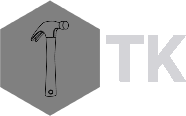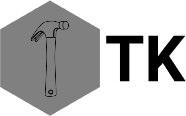Tool Management
Overview:
Tools are at the very core of ToolKeeper—it's right there in the name! This section covers everything you need to know about managing tools within the ToolKeeper system, where each tool is treated as a unique, serialized object. Though any serialized object can technically fit the definition of a "tool," it’s essential to understand the foundational requirements and optional attributes that make managing these items straightforward and effective.
Tool Requirement
Each tool in ToolKeeper requires three unique identifiers, ensuring clarity and traceability across your entire inventory. Here’s what you need for each tool:
- • Serial
Number: A
required, immutable identifier. Once a serial number is assigned to a tool, it
cannot be modified or reused, even if the tool is retired or decommissioned.
- • Tool ID: A unique identifier within ToolKeeper, often based on the tool's category and sequential numbering. This makes it easy to identify items in bulk, such as having "LM-38" as the Tool ID for the 38th label maker.
- •Barcode: Another required, unique identifier that provides quick, scannable access to each tool's profile within ToolKeeper.
Optional Tool Attributes
ToolKeeper includes several optional fields to help you organize and search for tools efficiently. Every field is searchable, enabling you to locate tools based on various characteristics. Here’s an overview of each field:
Model Number
Unique identifier for the tool's make and type.
Description
Optional short description (max 128 characters) for unique attributes.
Manufacturer
Optional name of the tool's maker or brand.
Service Assignment
Tool's current employee, vehicle, or job assignment.
Category
Tool’s type or classification as created by the user/admin for easy filtering.
Size
Optional physical attributes, like length or weight.



